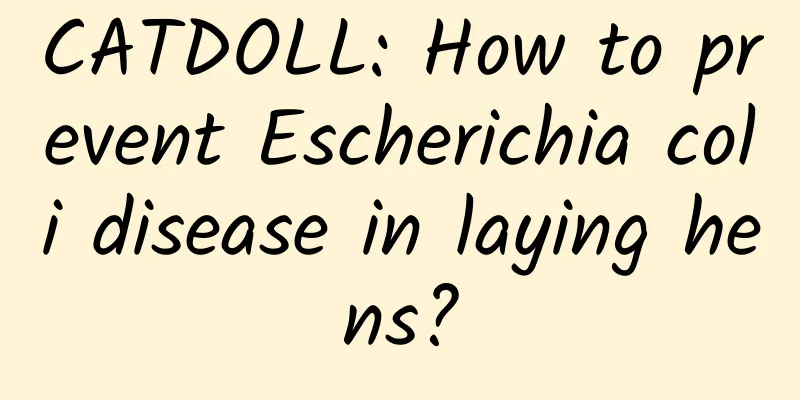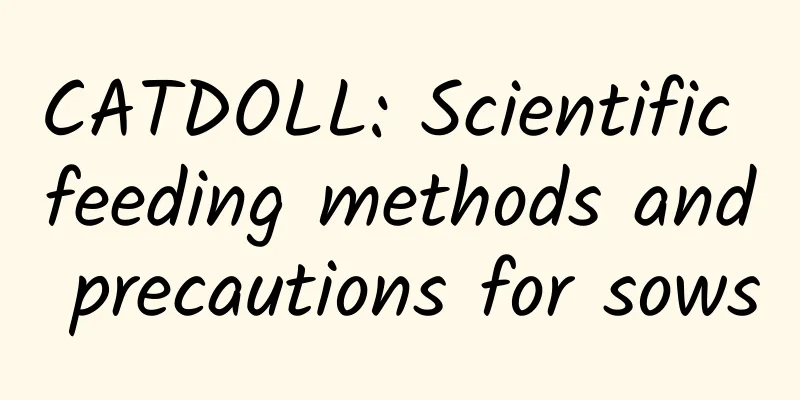CATDOLL : CATDOLL: Chinese bee breeding technology from zero to mastery (Chinese bee breeding technology guidance)

1. What is the whole process of Chinese bee breeding technology?Chinese bee breeding is carried out in eight steps: the first is to place the bee colony, the second is to inspect the colony, the third is to handle the honeycomb, the fourth is to feed the bees, the fifth is to merge the colonies, the sixth is to raise the queen, the seventh is to swarm the bees, and the eighth is to handle colony abnormalities. 1. Place the bee colony Because Chinese bees have a keen sense of smell, strong thieving instincts, and poor directional ability, the bee colony should be placed in a site with two or more main nectar sources (spring and summer, spring and autumn, spring and autumn and winter) and auxiliary nectar sources in other seasons. If the nectar source is insufficient, the bee colonies should be placed in a dispersed manner, usually in groups of 2-3 boxes. The distance between each colony is about 30 cm, and natural barriers such as trees, houses, and terrain should be used to separate the groups. Tips: Bee colonies should not be placed on windy mountaintops, near high-voltage transformers, in places subject to vibration and smoke, or near roads with heavy traffic of people, livestock, and vehicles. Once a bee colony is placed, it should not be easily moved. 2. Bee colony inspection There are two methods for inspecting bee colonies: outside-box observation and open-box inspection. Observation outside the hive: If the worker bees are not active in attendance, return to the nest without pollen, and their wings are shaking in front of the nest door, and they enter and exit in a chaotic manner, it can be preliminarily judged that the bee colony has lost its queen. If there are half-dead pupae dragged out near the nest door, it indicates that there is nest insect damage; if the dragged out are larvae, the bee colony may suffer from larval disease; if there are worker bees with dark body color, swollen abdomen, difficulty in flying, and slow movements crawling in front of the nest door, and there is thin feces around the beehive, the bee colony may suffer from microsporidiosis. Unpacking and inspection: If there is honey on the side combs, even capped, and there are 2-3 fingers of honey lines on the upper part of the central comb, it means that the feed is sufficient; otherwise, it should be supplemented in time. If the caps show "white-headed pupae" with a linear trend, the combs are uneven, and there are many wax scraps on the bottom of the box, it can be judged as nest worm disease; if the larvae are pointed and upright, and there are some irregular small holes on the surface of the capped combs, it can be judged as cystic larvae disease. Tips: Each unpacking should have a clear purpose. If it is not necessary or the weather is not suitable, do not open the box blindly and frequently. 3. Honeycomb Processing If the surface of the honeycomb turns white and wax spots appear on the nest frame, you can add more honeycombs, one at a time, at the edge of the nest frame, and discard the old honeycombs. The general rule for placing honeycombs is to place eggs, worms, brood and new honeycombs in the middle, and old, honey and pollen honeycombs on both sides. The distance from the bee path is 8 mm, which is reduced to 6 mm when accelerating reproduction, and widened to 10 mm when high temperature ventilation is used. A little reminder: Depending on the situation, it is necessary to regulate and replenish the spleen. 4. Bee feeding Bees are mainly fed sugar, pollen, water, salt, etc. Feeding sugar: White sugar has no odor and is not likely to attract bee robbers; the syrup concentration is usually 2:1, that is, two pounds of white sugar to one pound of water, or 1:1. If honey is used, then 3 pounds of honey to one pound of water. Feeding pollen: Pollen is usually fed during the spring breeding season, the long-term low temperature and rainy season, and when there is a lack of external nectar sources. Pollen combs can be directly inserted into the bee colony for supplementation, and natural pollen and artificial pollen can also be used for feeding. Feeding water and salt: When the weather is hot and dry, the bee farm can set up water dispensers or drinking troughs. When feeding water, you can add appropriate salt, the ratio is to add 0.1-0.5% salt to clean water. 5. Swarm Merger Bee colony merging refers to the process of merging two bee colonies into one. During the spring breeding season and late autumn, weak colonies, colonies with aging queens, and colonies without queens can all be merged. There are two methods of merging colonies: direct merging and indirect merging. Tips: When merging directly, drop 4-5 drops of perfume or 10 drops of white wine on the frame beam for better results. 6. Breeding the King Queen rearing is divided into artificial queen rearing and mating group organization. Artificial queen rearing includes three main steps: breeding drones, organizing nursery groups to breed queens, and organizing virgin queens to mate. Mating groups are bee colonies organized by inducing mature royal cells or virgin queens for new queens or virgin queens to mate. Mating groups can use special mating boxes or can be separated groups without queens. 7. Swarm Swarming can be divided into two types: artificial swarming and natural swarming. Artificial swarming can be further divided into two types: single-colony equal swarming and single-colony unequal swarming. Single colony equal swarming is usually carried out after a large honey flow. The original colony moves half of the box position, and an empty box is added side by side. The original honey comb and brood comb are divided into two and placed in two beehives. The left colony opens the left nest door, and the right colony opens the right nest door. One colony has an old queen. The colony without a queen will introduce a mature queen cell as a mating colony on the second day of swarming. Unequal swarming in a single colony occurs during the period of high honey flow. For colonies that have developed swarming fever, remove the old queen and two frames of honeycombs with bees and honey-sealed lids, and choose a new site to make a breeding colony. Keep a large and straight queen cell in the original colony, or introduce a mature artificial queen cell. 8. Bee colony exception handling The treatment of abnormal bee colonies mainly includes two types: early prevention and worker bee egg-laying treatment. Early prevention should strengthen feeding to prevent honey shortage; do not spill honey outside the hive during inspection and feeding; close the small nest door and merge weak colonies during honey shortage period. After the bee colony loses its queen, the emergency construction of the queen cell is unsuccessful. If the queen bee, queen cell or colony is not induced in time, worker bees will lay eggs. At this time, you can inject concentrated salt water to kill the egg larvae, rinse with clean water, dehydrate and move to another bee colony for use 2. How to get started with Chinese beekeeping technology for beginners?Soil culture It is most common in ordinary farmers' homes. It only requires a few wooden barrels, which are turned upside down in front of and behind the farmers' houses. The wooden barrel needs to be boiled in a large pot, and salt, a small amount of honey, and a small amount of beeswax can be added to the water. You can also use pure Chinese beeswax to brush the boiled wooden barrel inside the barrel, and brush the bottom of the barrel thicker. Under normal circumstances, in general places, when the spring equinox comes, it is the peak season for the natural swarming of Chinese bees. Natural swarms of bees will come to build nests, and after the big nectar source has passed, honey can be collected. In general, two seasons of honey can be collected in a year, with average yield, extremely high concentration, good taste, and slightly expensive price. This is the technology of raising Chinese bees in the traditional way. Although the output is average, the management and operation methods are extremely simple. It is very suitable for novice beekeepers, or individual investors who raise a small number of Chinese bees. It is also suitable for amateur beekeepers who raise a few groups of bees to enrich their spare time. 3. Technical guide for breeding Chinese bees?1. Nectar source: A bee farm must be built in a place with abundant nectar source. The reason is that bees cannot survive normally and make honey from collecting nectar. If there is a lack of nectar source nearby, the survival of the bee colony will be a problem, let alone expecting bees to collect nectar and make honey. 2. Environment: The apiary must be built in a quiet environment. The reason is that the microclimate near the apiary is more conducive to the reproduction of the bee colony. For example, when the temperature is high, the bees will fan or collect water to cool down, which will invisibly increase the burden on the bee colony. 3. Climate: The apiary must be established in a place with a suitable climate. The reason is that the bee colony can only develop stably in a quiet environment. Otherwise, the bee colony may not be able to collect and make honey quietly. If it is severely disturbed, the bee colony may even abandon the nest and flee. 4. Pests: Bee farms must be built in places where pests are rare. This is because there are many pests in nature that will invade and kill bees. For example, hornets will not only kill worker bees that go out to collect honey, but will also concentrate on attacking bee colonies in seasons when food is scarce. 4. Northern Chinese bee breeding technology1. The first thing is to choose the breeding environment. The breeding site is required to face north and south, and be dry and ventilated. 2. The beehive must be tight and seamless. The next step is reasonable management, including bee species selection, queen bee management, colony temperature control management, and bee colony feed management. 3. The last step is moderate production. Wait until the honey on the honeycomb is capped and mature before taking it. Only in this way can you get high-quality honey. 5. Chinese bee breeding technology?1. Choosing the time for transfer First, the nectar and pollen source plants outside are blooming and flowing, the bees are diligent in collecting nectar, and there is a certain amount of honey accumulated in the nest. During this period, it is not easy to be stolen, and the bee colony will recover and grow quickly. |
<<: CATDOLL: Top 10 ants ranking pictures (top 10 ants ranking pictures HD)
>>: CATDOLL: How to eliminate flies in chicken farms (How to eliminate flies in chicken farms)
Recommend
Why do cats sleep in cat litter?
Reasons why cats sleep in cat litter: 1. It may b...
CATDOLL: What medicine should be used if grouper has virus?
What medicine should be used if grouper has virus...
CATDOLL: What percentage of a snail's body weight is made up of its shell?
1. What percentage of the body weight does the sn...
CATDOLL: What does it mean to keep spiders?
1. Why do some people dare to raise spiders? The ...
CATDOLL: How much does 120 kilograms of abalone cost?
1. How much does 120 kilograms of abalone cost? T...
CATDOLL: How to preserve honeycomb?
1. How to preserve honeycomb? The extracted honey...
CATDOLL: Many people don’t understand the technology of conger eel farming. What are the key points of conger eel farming technology?
Conger eel belongs to the class of bony fish, ord...
CATDOLL: Detailed information about gar
More information about gar The gar, also known as...
Sow's milk is not coming out? These methods can help you solve it!
Reasons why sows don't produce milk There may...
CATDOLL: What to do if the water in the fish pond is bubbling and silver carp are dying?
1. What to do if the water in the fish pond is bu...
CATDOLL: What is the function of the bristles on the ventral side of earthworms?
Fixation The bristles on the ventral surface of t...
CATDOLL: How to raise baby guppies?
How to raise baby guppies? How can guppy fry grow...
CATDOLL: What are the advantages and disadvantages of raising spiders? (What are the advantages and disadvantages of raising spiders?)
1. Why do some people keep spiders as pets? First...
CATDOLL: Do I need a passport to go to North Korea or Haishenwan from Hunchun?
1. Do I need a passport to go to North Korea or H...
CATDOLL: How to raise black carp to make it grow faster
1. How to feed black carp to make it grow fast Po...









